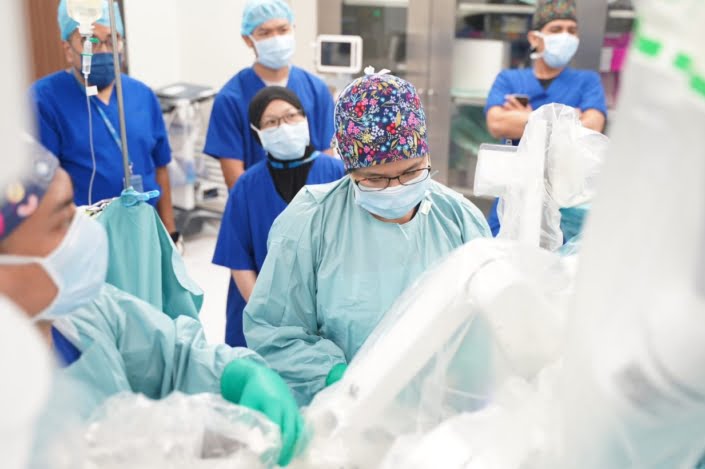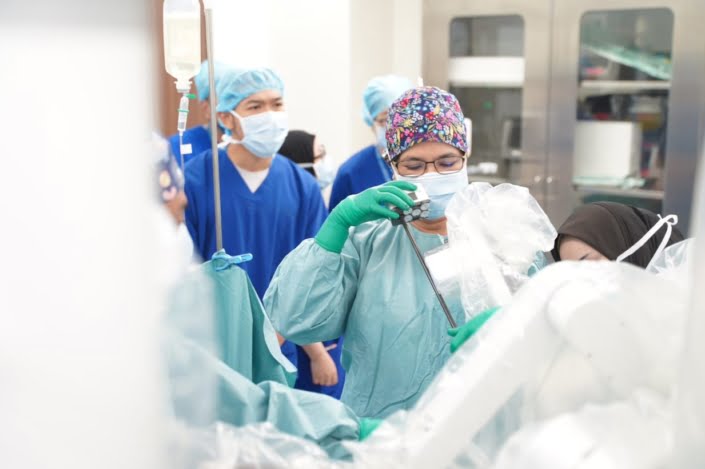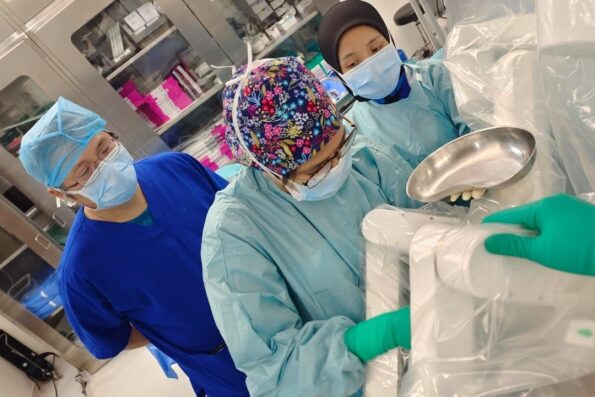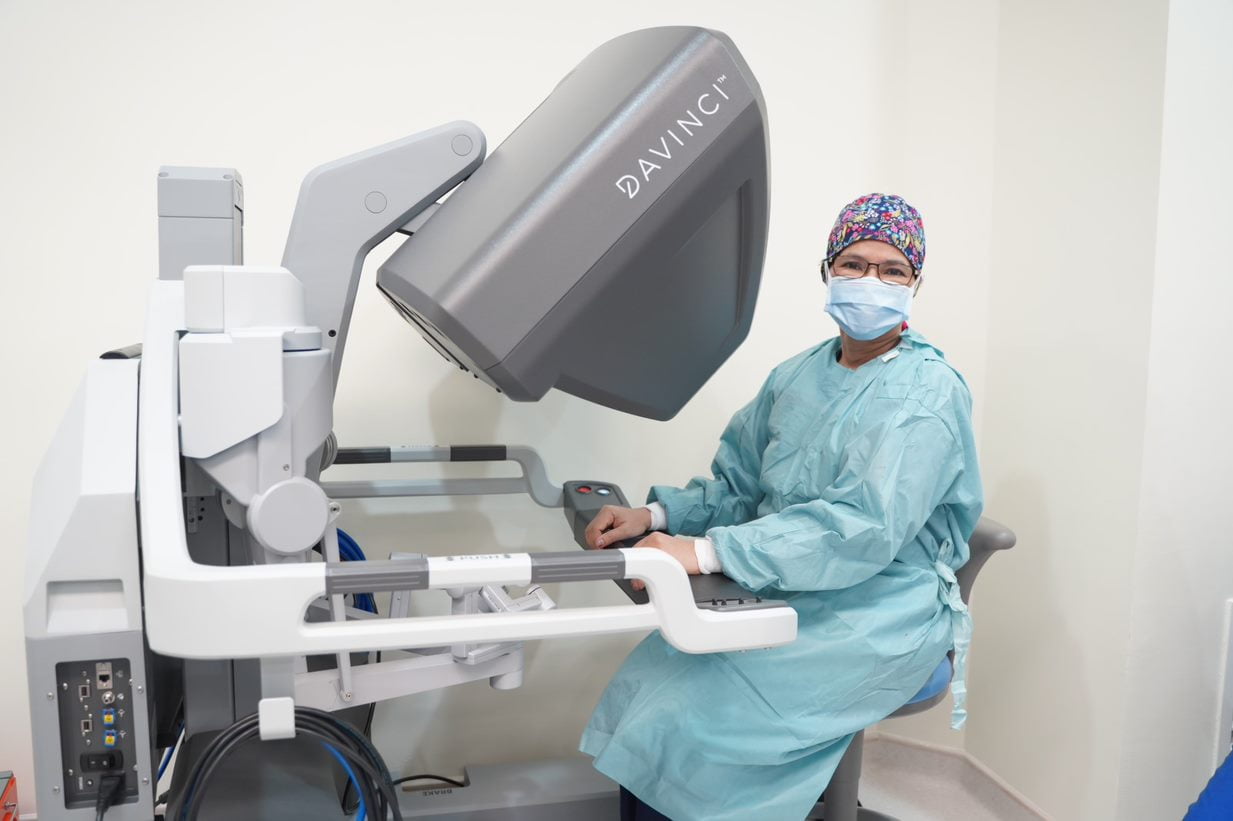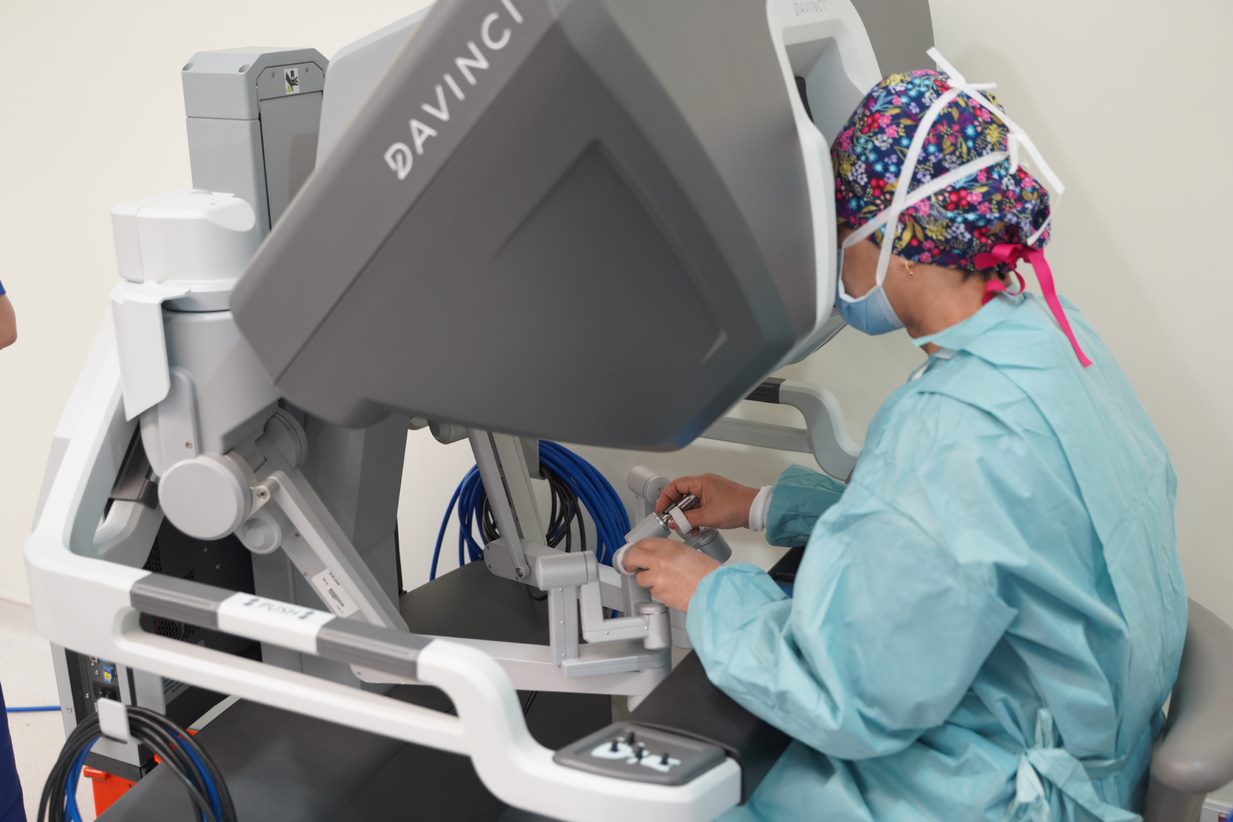- How It Works
How does robotic-assisted surgery work?
Special equipment used during robotic-assisted procedures includes an operating console for the surgeon, precision-guided robotic arms that are inserted through a few small incisions and a small video camera that provides magnified, 3D images of the surgical site. The camera enables surgeons to see blood vessels, nerve bundles and organs (such as the bladder, rectum and ureters) adjacent to the operating area. The robotic arms, with full 360-degree rotation capabilities, allow surgical instruments to move with precision, flexibility and a range of motion that cannot be accomplished with other options.
Robotic-assisted procedures are usually done while the patient is under general anesthesia. Most patients experience only a small blood loss and blood transfusions are uncommonly needed. Patients who undergo minimally invasive surgery typically spend zero to two nights in the hospital. They are usually discharged when they are able to tolerate regular food, walk without assistance and have pain that can be controlled with medication.


